Over the weekend, it was reported that up to 300,000 people in England came out to support the Boxing Day fox hunts which is now seen as an important tradition. Controversies aside, the sport is largely about the community, the thrill of riding horses around in the field all day, and having a few drinks along the way. Not a bad way to spend a cold winter day really.
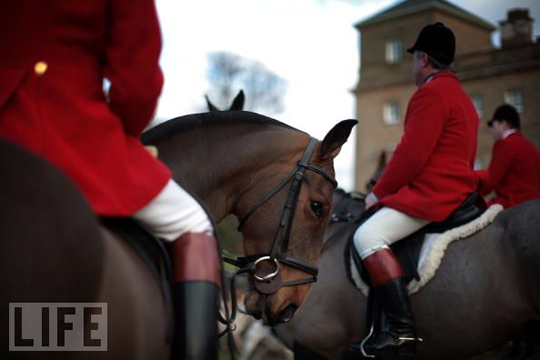
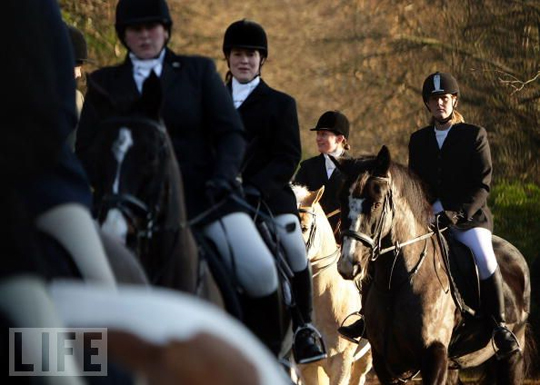
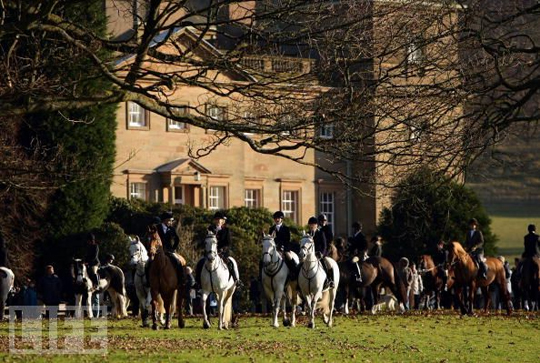
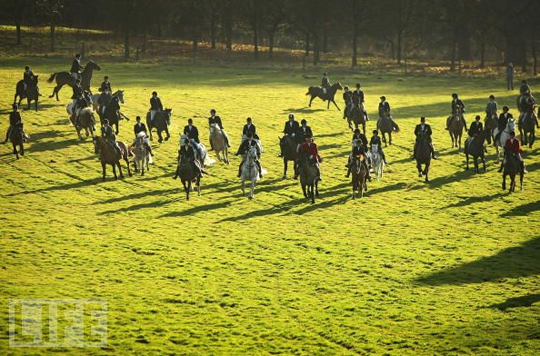


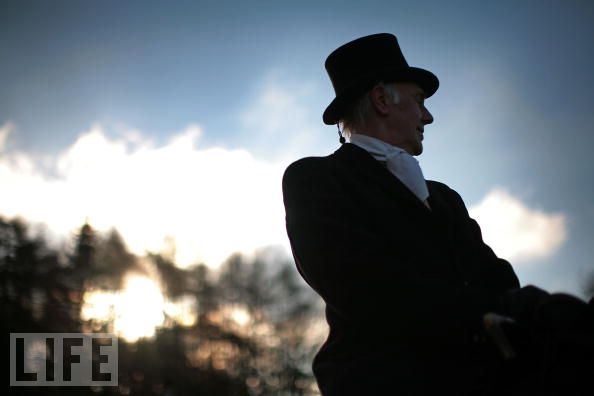
From a journal written in 1908:
Masters of Hounds choose their meets on Boxing Day at places where it is convenient for large crowds to get a glimpse of the scarlet coats and the hounds. It is a great thing to keep up the interest of the people in fox-hunting as far as it can possibly be done, and these popular holiday meets undoubtedly do a great deal towards fostering the love of the chase which is, I think, inherent in the inhabitants of these islands. Another pleasant feature of Christmas-time hunting is to see the boys and girls home from school mounted on their ponies and joining in the glad throng with all the enthusiasm of youth.
They are the keenest of the keen, and we must always remember that the sporting schoolboy of to-day is very likely to be the country gentleman of tomorrow, so we must keep his heart in the right place, and encourage his fondness for hounds and hunting. There are one or two old fogies who will vow that the air reeks with the smell of buns at the Christmas meets, and they eye the small Nimrods with a considerable amount of disfavour. But I think that nearly everyone who has the true interests of the sport at heart is glad to welcome the youngsters. There are older enthusiasts whose business does not allow them to go hunting regularly, but are able to get two or three days’ sport with the hounds at Christmas. Among them are many born fox-hunters, who know as much about the sport as the constant followers. To see them enjoying their favourite pastime adds to the delights of Yuletide hunting.
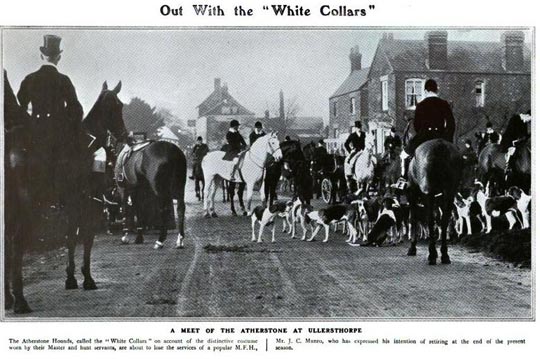
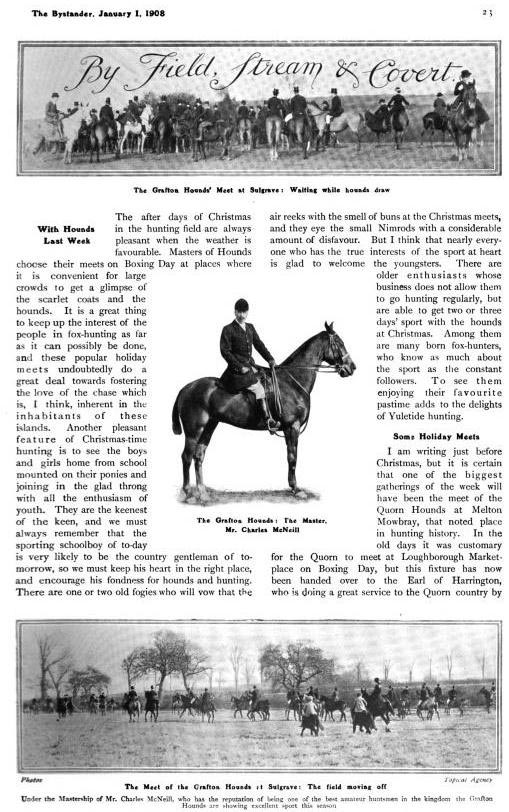

On the attire:
Mounted hunt followers typically wear traditional hunting attire. A prominent feature of hunts operating during the formal hunt season (between late October and the end of March) is hunt members wearing ‘colours’. This attire consists of the traditional scarlet coats worn by huntsmen, masters, former masters, whippers-in (regardless of sex), other hunt staff members and male members who have been invited to wear colours as a mark of honour. The coats are also known as Pinks. Ladies generally wear coloured collars on their black or navy coats. These help them stand out from the rest of the field. Various theories about the derivation of this term have been given, ranging from the colour of a weathered scarlet coat to the name of a purportedly famous tailor.
Some hunts, including most hare hunts, use green rather than red jackets. The colour of breeches (riding pants) vary from hunt to hunt and are generally of one colour, though two or three colours throughout the year may be permitted. Boots are generally English dress boots (no laces). For the men they are black with brown leather tops (called tan tops), and for the ladies, black with a patent black leather top of similar proportion to the men. Additionally, the number of buttons is significant. The Master of the hunt wears a scarlet coat with four brass buttons while the huntsman and other professional staff wear five. Amateur whippers-in also wear four buttons.
Another differentiation in dress between the amateur and professional staff is found in the ribbons at the back of the hunt cap. The professional staff wear their hat ribbons down, while amateur staff and members of the field wear their ribbons up.
Those members not entitled to wear colours, dress in a black hunt coat and unadorned black buttons for both men and ladies, generally with pale breeches. Boots are all English dress boots and have no other distinctive look. Some hunts also further restrict the wear of formal attire to weekends and holidays and use ratcatcher all other times.
Other members of the mounted field follow strict rules of clothing etiquette. For example, those under eighteen will wear tweed jackets or ratcatcher all season. Those over eighteen will wear ratcatcher during Autumn hunting from late August until the Opening Meet, normally around November 1. From the Opening Meet they will switch to formal hunting attire where entitled members will wear scarlet and the rest black or navy. The highest honour is to be awarded the hunt button by the Hunt Master. This means you can then wear scarlet if male, or the hunt collar if female (colour varies from hunt to hunt) and buttons with the hunt crest on them.
Here are some older photos taken during a fox hunt in 1949.
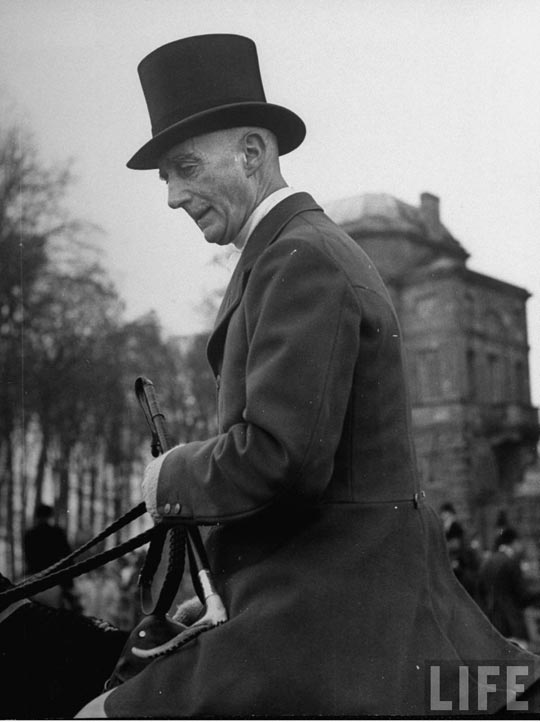

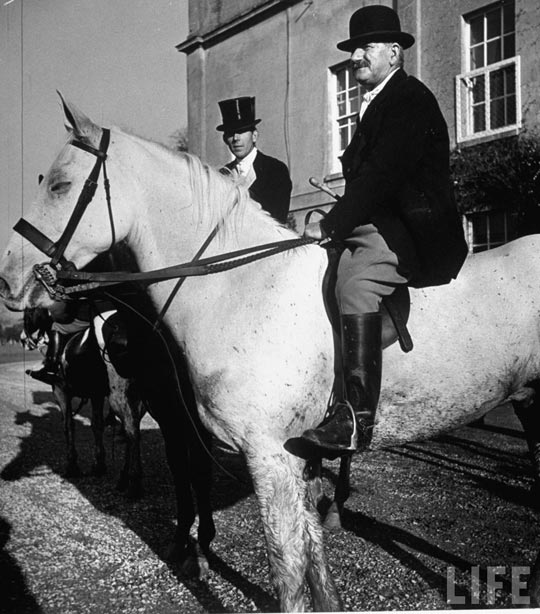

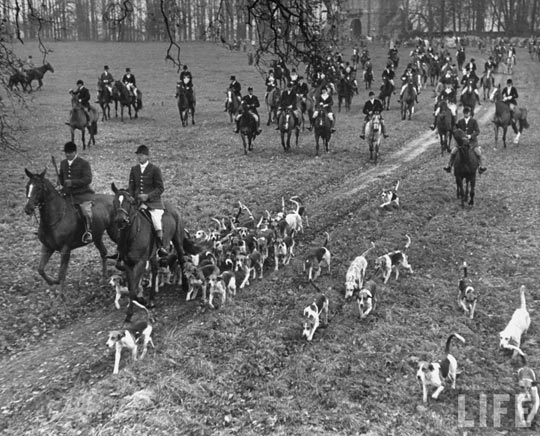

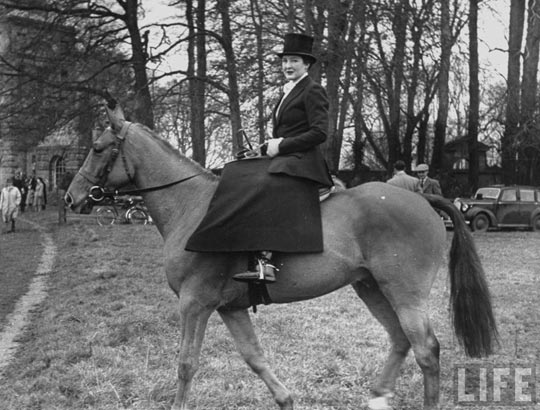
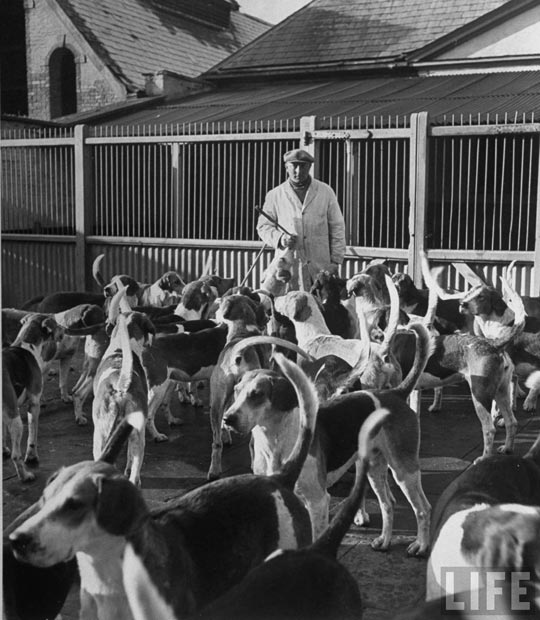

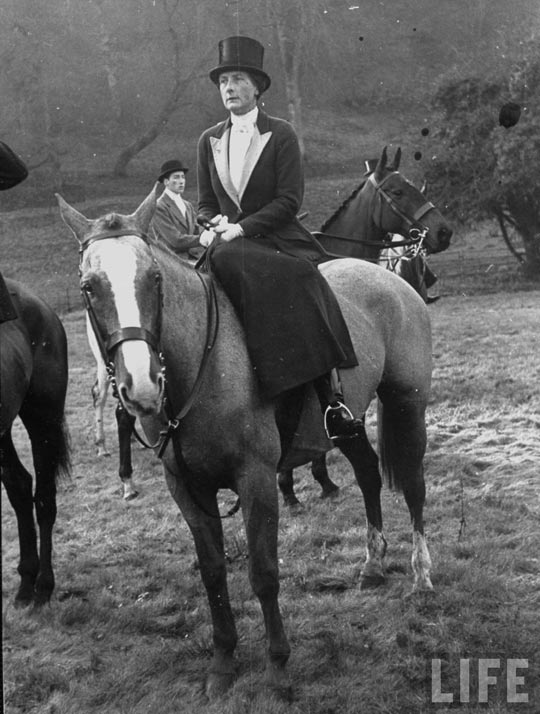
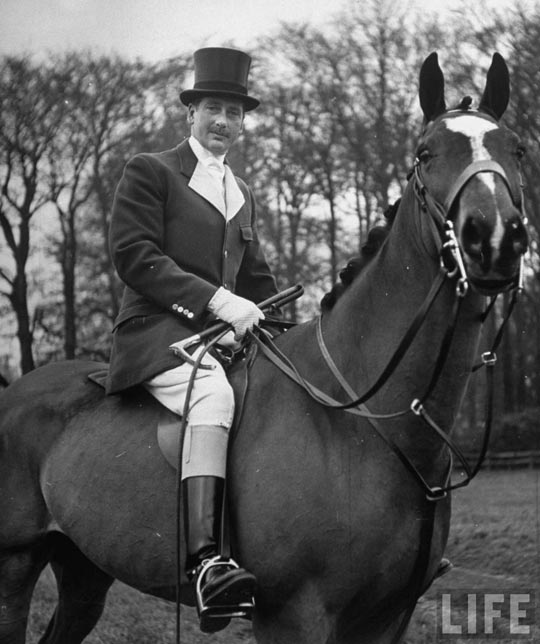
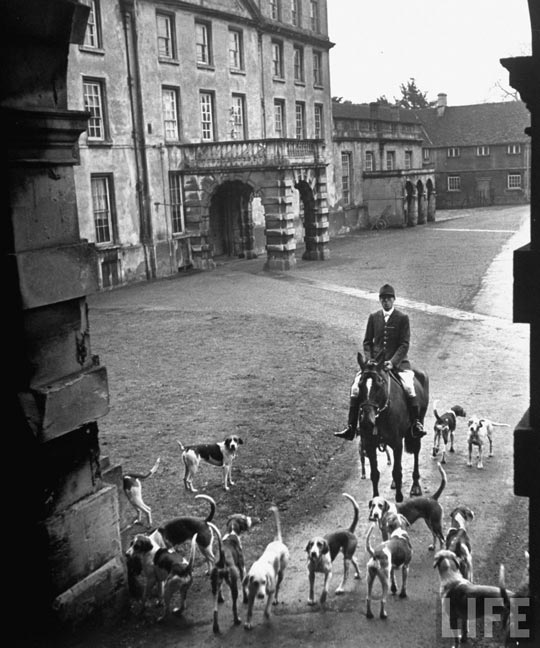

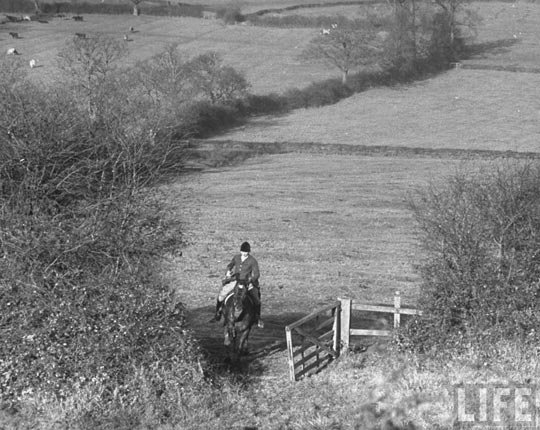

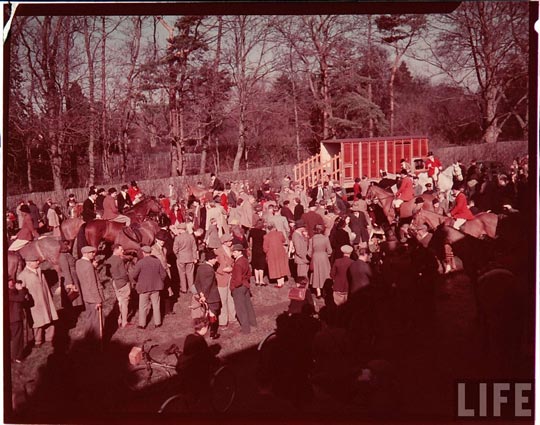
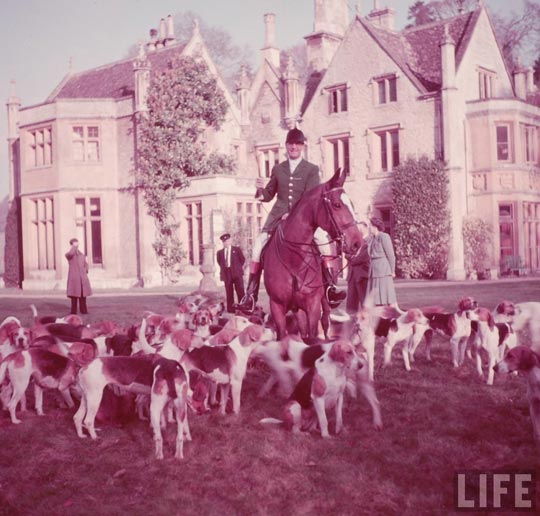
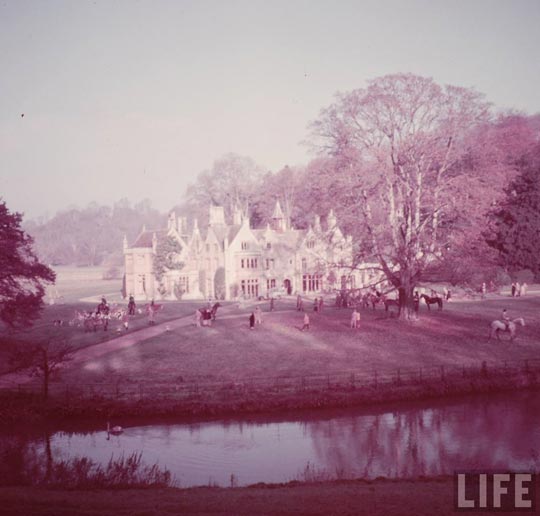
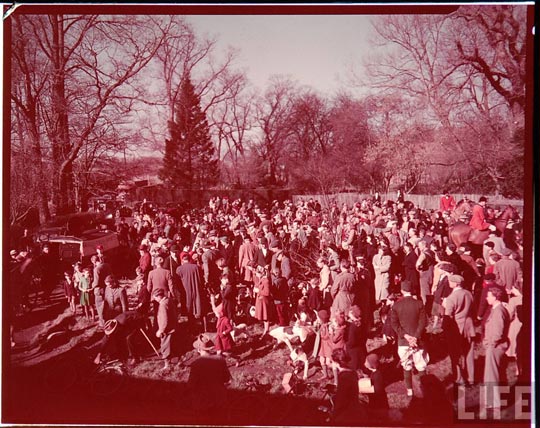

Comments are closed.